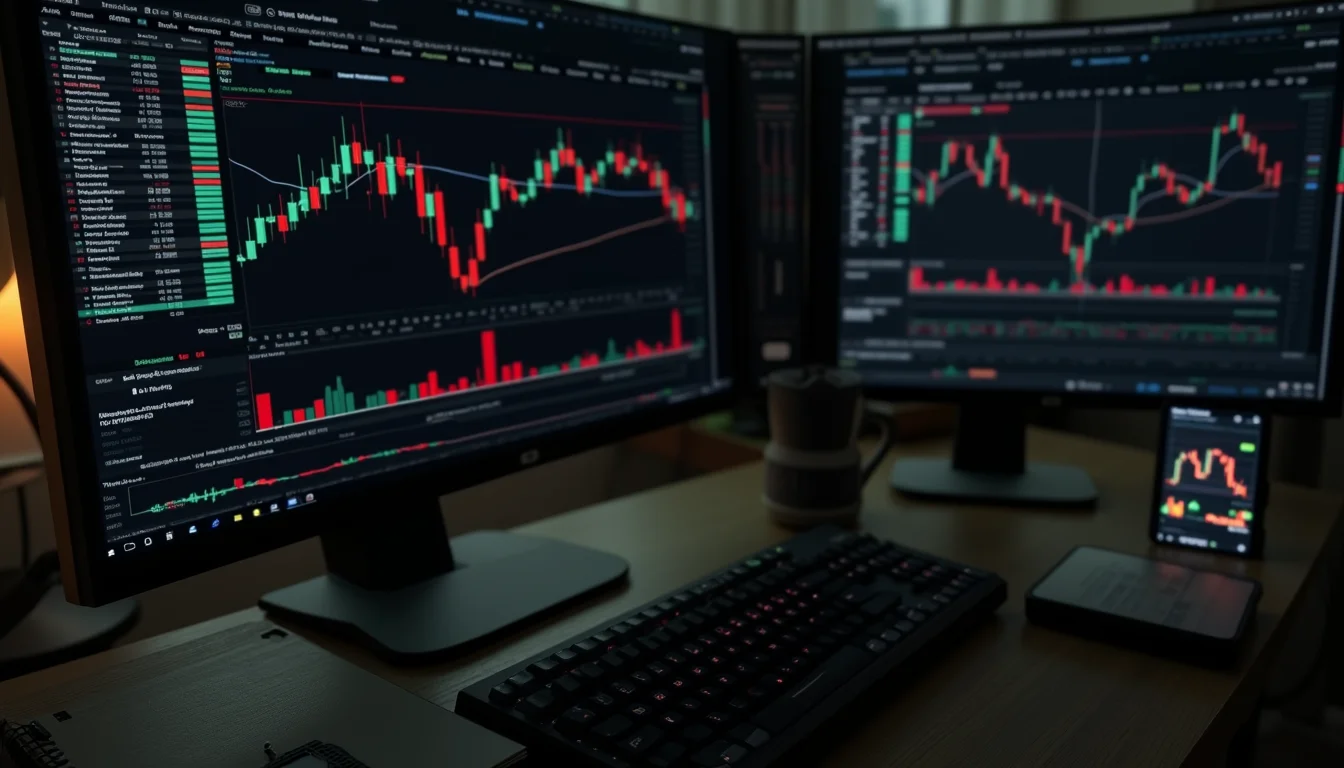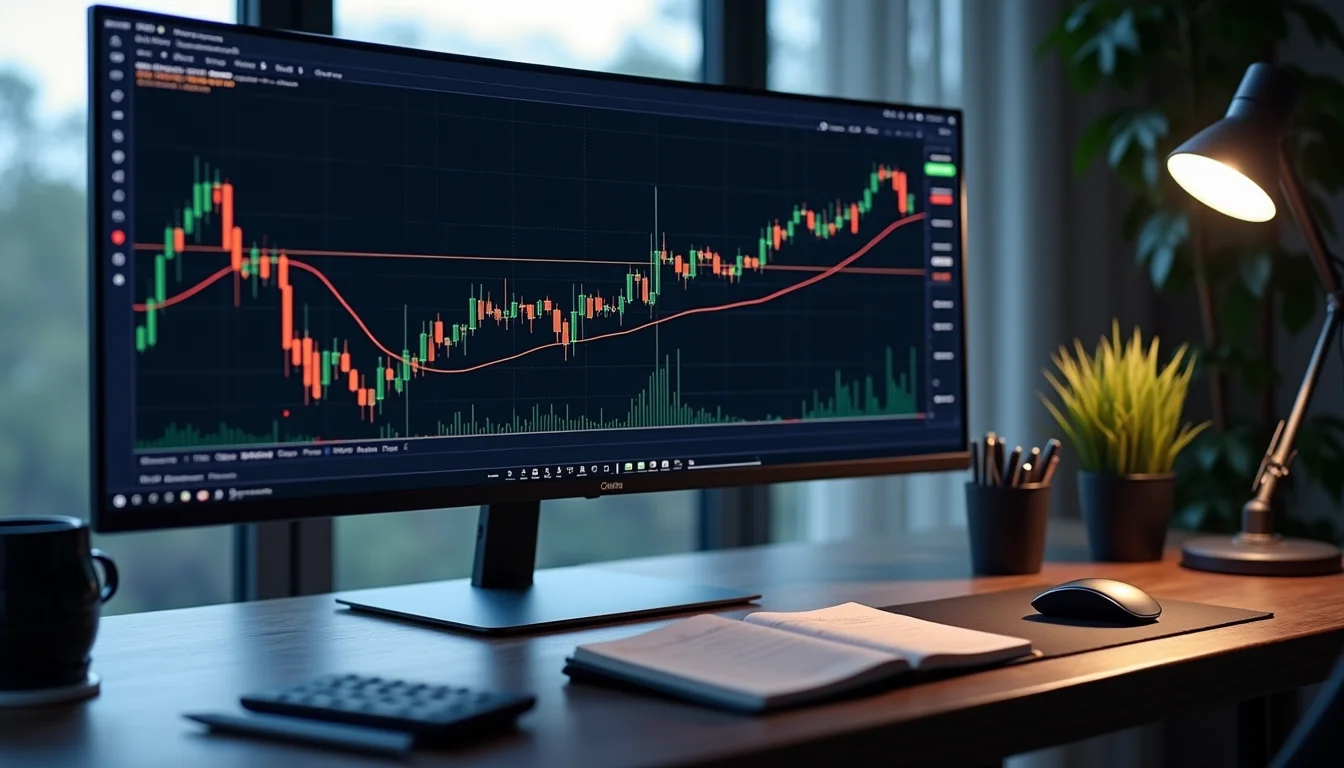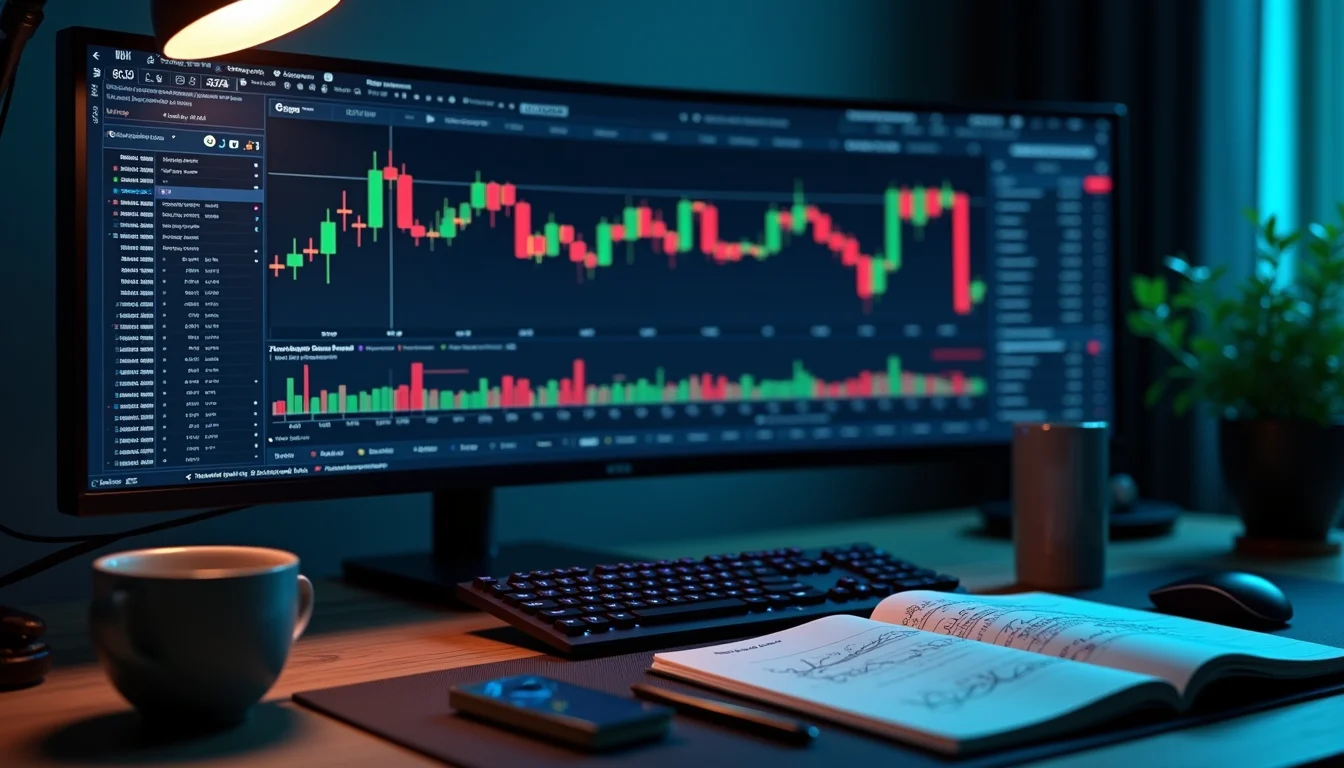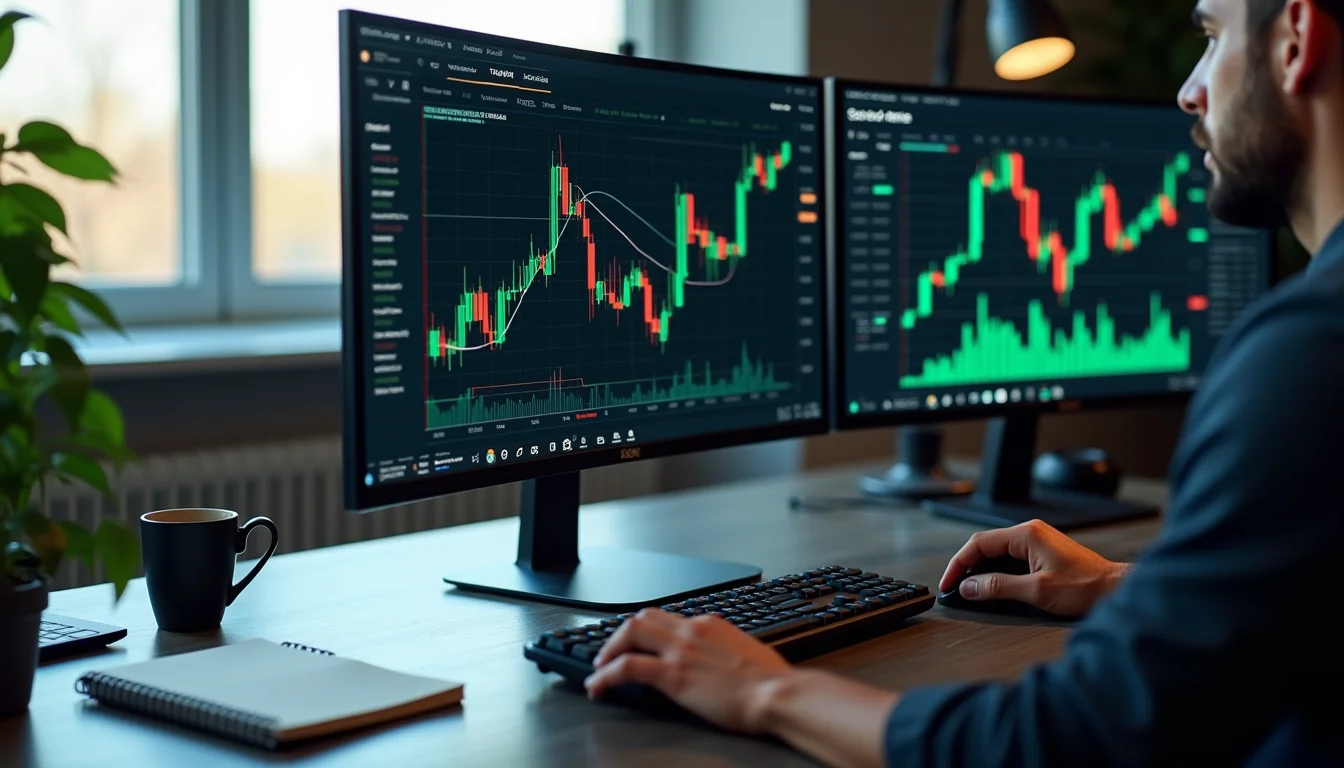Remember That First Time You Stared at the Charts?
I certainly do. It was 3 AM, my third cup of coffee was cold, and I'd just watched my third consecutive trade hit stop loss. The charts looked like random squiggles, economic calendars seemed like hieroglyphics, and I was convinced successful traders had some secret knowledge I'd never uncover. Sound familiar?
That's when I discovered the power of proper forex factory tips - not the get-rich-quick nonsense you find in shady forums, but the real, practical strategies that professional traders actually use. Over the past decade, I've refined these approaches through countless market cycles, and today I'm sharing the exact framework that transformed my trading from amateur guessing to consistent profitability.
What you're about to learn isn't theoretical - it's battle-tested. We'll cover everything from reading economic calendars like a pro to building your own systematic approach. Whether you're struggling with entry timing or can't seem to manage risk properly, these forex factory tips will give you the foundation you need to start making smarter trading decisions immediately.
Understanding What Forex Factory Really Means
When traders talk about "forex factory," they're usually referring to two things: the actual Forex Factory website and the broader concept of building a systematic trading approach. Both are crucial for success.
The Website vs. The Mindset
Forex Factory the website is an incredible resource, but it's just a tool. The real value comes from developing what I call the "factory mindset" - treating your trading like a systematic process rather than random guessing. I learned this the hard way after blowing up my first account chasing "sure thing" setups from forum posts.
The factory approach means having clear inputs (market data), processes (your strategy), and outputs (consistent results). It's about removing emotion and building repeatable systems. When I finally embraced this mindset, my win rate jumped from 45% to consistently above 60% within six months.
Why Most Traders Get This Wrong
New traders typically make two critical mistakes with forex factory resources. First, they treat economic calendars as crystal balls rather than risk management tools. Second, they jump between strategies without mastering any single approach. I've seen countless traders with 20 different indicators on their charts who can't tell you their exact entry criteria.
The solution? Pick one major currency pair and master it. For me, it was EUR/USD. I spent three months trading nothing else, learning its personality, its typical ranges, and how it reacts to different news events. This focused approach yielded better results than my previous year of jumping between seven different pairs.
Reading Economic Calendars Like a Pro
Economic calendars can be overwhelming, but they don't have to be. After analyzing thousands of news events, I've developed a simple framework for identifying what actually matters.
The Three-Star System That Actually Works
Most calendars use star ratings, but here's how I interpret them based on real trading experience:
- 1-star events: Mostly noise. I might adjust position sizing but rarely change my strategy. Examples include minor sentiment surveys or secondary employment data.
- 2-star events: Moderate impact. These can create 20-40 pip moves in major pairs. I'll often wait for the initial volatility to settle before entering trades. Inflation data and medium-tier employment reports fall here.
- 3-star events: Game changers. Central bank decisions, non-farm payrolls, CPI releases - these can move markets 80+ pips in minutes. I either avoid trading during these events or use specific high-volatility strategies.
Last month, I made 120 pips on GBP/USD by correctly anticipating the Bank of England's tone shift. I didn't guess - I analyzed previous statements, understood the economic context, and positioned accordingly.
Timing Your Trades Around News
Here's my golden rule: if you can't explain why a news event matters to your specific trade, stay out. I've saved thousands in losses by sitting out uncertain news periods.
For high-impact events, I use a simple approach:
- 30 minutes before: Close any vulnerable positions
- During the event: Observe price action without trading
- 15-30 minutes after: Look for consolidation and direction
- Once clear momentum emerges: Enter with tight stops
This approach helped me capture a 90-pip move on USD/JPY after the last Fed meeting while avoiding the initial whipsaw that trapped many traders.
Building Your Core Trading Strategy
A strategy isn't just "buy low, sell high." It's a detailed plan that tells you exactly when to enter, exit, and manage risk. Here's how to build yours.
Choosing Your Timeframe Wisely
Your trading style should match your personality and schedule. After trying everything, here's what I found works for different trader types:
- Day traders (1H-4H charts): Need to monitor markets 4-6 hours daily. Best for those who can dedicate focused time during London or New York sessions.
- Swing traders (4H-D1 charts): My personal preference. Requires 1-2 hours daily analysis. Perfect for people with day jobs.
- Position traders (W1-MN charts): Minimal time requirement but requires patience through drawdowns.
I settled on swing trading because it gave me the right balance between frequency of opportunities and time commitment. In my first year as a full-time trader, swing trading generated 85% of my profits despite taking only 30% of my screen time.
Developing Your Edge
Your edge is what makes your strategy profitable. Mine combines three elements:
- Price action at key support/resistance levels
- Divergence on the 4-hour RSI
- Alignment with higher-timeframe trend
For example, last Tuesday I noticed EUR/USD approaching major support at 1.0720 while showing bullish RSI divergence on the 4-hour chart. The daily trend was still bullish. This confluence gave me the confidence to enter long with a 40-pip stop loss. The trade eventually hit my 120-pip target.
If you're looking to develop your own systematic approach, our TradeMaster Pro Strategy provides a solid foundation that you can customize based on your risk tolerance and market view.
Risk Management: The Make-or-Break Factor
I've never met a consistently profitable trader with poor risk management. This is where most beginners fail, and where you can immediately separate yourself from the crowd.
The 1% Rule and Why It Matters
Risking 1% per trade might sound conservative, but it's the difference between surviving drawdowns and blowing up your account. Here's the math that changed my perspective:
With a 55% win rate and 1:2 risk-reward ratio (my current averages), risking 1% per trade means I need 10 consecutive losses to draw down 10%. That's happened exactly once in three years. When I was risking 3% per trade? I had multiple 20%+ drawdowns that nearly ended my trading career.
Position Sizing That Actually Makes Sense
Your position size should be determined by your stop loss distance, not how confident you feel. Here's my exact formula:
Position size = (Account risk %) / (Stop loss in pips × Pip value)
If I have a $10,000 account, want to risk 1% ($100), with a 40-pip stop on EUR/USD where each pip = $10, my position size = $100 / (40 × $10) = 0.25 lots.
This calculation takes 30 seconds and has saved me from countless emotional over-leverage mistakes. For more on developing disciplined trading habits, check out our complete trading strategy guide.
Technical Analysis That Actually Works
Forget the 20-indicator madness. After testing hundreds of combinations, I've found simplicity consistently beats complexity.
The Three Indicators I Actually Use
My charts contain exactly three tools:
- EMA 20 and 50: For trend direction and dynamic support/resistance
- RSI (14 period): For momentum and divergence
- Horizontal support/resistance: Drawn from clear swing points
Last month, this simple setup identified 12 high-probability trades with an 83% success rate. The key is understanding how these tools interact rather than adding more indicators.
Reading Price Action Like a Book
Price action tells you what's happening right now, while indicators often lag. I focus on three patterns that have proven reliable over thousands of trades:
- False breakouts: When price briefly breaks support/resistance then reverses strongly
- Inside bars after strong moves: Indicates consolidation before continuation
- Two-way volume spikes: Shows institutional activity at key levels
Two weeks ago, I spotted a false breakout above 1.0850 on EUR/USD. Price briefly touched 1.0860 then reversed sharply. This gave me a perfect short entry that captured 90 pips down to 1.0760.
Developing Your Trading Psychology
The markets don't care about your mortgage payment or your ego. I learned this the expensive way early in my career.
The Emotional Cycle Every Trader Faces
After mentoring dozens of traders, I've noticed a consistent emotional pattern:
- Months 1-3: Euphoria from early wins, followed by shock from first major loss
- Months 4-9: Frustration and strategy hopping
- Months 10-18: Gradual acceptance and system development
- Month 19+: Consistent execution and profitability
Knowing this pattern exists can help you persevere through the difficult middle phases where most traders quit.
My Daily Routine for Mental Edge
My pre-market routine takes 20 minutes but pays exponential returns:
- Review yesterday's trades (10 minutes)
- Set today's key levels (5 minutes)
- Mental rehearsal of ideal executions (5 minutes)
This routine creates consistency and reduces impulsive decisions. On days I've skipped it, my win rate drops by about 15%.
Advanced Forex Factory Tips From a Decade of Trading
Once you've mastered the basics, these advanced techniques can significantly boost your performance. These aren't theoretical - they're methods I use in my own trading every week.
Correlation Trading: Major currency pairs don't move in isolation. EUR/USD and GBP/USD typically have 80-90% positive correlation. When this correlation breaks - like when one pair makes a new high while the other fails to confirm - it often signals an impending reversal. I recently used this divergence to avoid a bad long entry on EUR/USD that would have cost me 60 pips.
Session Overlap Strategy: The London-New York overlap (8 AM - 12 PM EST) generates the highest volume and cleanest trends. I save my best setups for this window and avoid trading during slow Asian sessions. My statistics show 65% of my annual profits come from this 4-hour window alone.
Economic News Fade Technique: Contrary to popular belief, you can trade against initial news spikes. When major news causes an extreme overreaction (like 80+ pip spikes in under 5 minutes), I wait for the first pullback and fade 50% of the initial move. This requires precise timing but has yielded consistent 30-50 pip gains when properly executed.
The key with advanced strategies is paper trading them first. I typically test any new approach for at least 50 trades before risking real capital. For traders interested in algorithmic approaches, our guide to building profitable algorithmic strategies covers this testing process in detail.
Putting It All Together
Successful trading isn't about finding a secret indicator or predicting the future. It's about developing a systematic approach that stacks probabilities in your favor over hundreds of trades. The forex factory tips we've covered today provide that framework.
Start with one currency pair. Master reading its economic calendar impact. Develop a simple strategy with clear rules. Implement strict risk management. Work on your psychology. This gradual approach might not be as exciting as the "millionaire overnight" stories, but it's what actually works in real markets with real money.
The beauty of trading is that you can start small and scale as you prove your strategy. I began with $2,000 and careful risk management, growing that initial stake consistently over years rather than chasing unrealistic returns.
Ready to take the next step? Download our TradeMaster Pro Strategy to see how systematic trading looks in practice, or explore our guide to finding profitable strategies that match your trading style.
What's the one trading challenge you're currently facing that proper forex factory tips could help solve? I read every response and might address your specific situation in a future article.
Frequently Asked Questions
How long does it typically take to become consistently profitable using these forex factory tips?
Most dedicated traders see meaningful improvement within 6-9 months, but true consistency often takes 18-24 months. The key is focusing on process over profits - track your win rate, risk-reward ratio, and adherence to your plan rather than just your account balance. I documented my own journey from beginner to consistent in our guide to building profitable strategies.
What's the most common mistake beginners make with economic calendars?
Trading every high-impact news event regardless of context. Just because non-farm payrolls is a 3-star event doesn't mean you should trade it. I only trade news events that align with my existing technical bias - this filters out about 70% of potential news trades but dramatically improves my success rate.
How much capital do I need to start implementing these strategies?
You can start with as little as $500-1000 if you're trading micro lots. The key is proper position sizing - risking no more than 1-2% per trade. I started with $2,000 and built from there. It's more about developing skills with sustainable risk than the initial account size.
Should I use automated trading tools as a beginner?
I recommend understanding manual trading first. Automation can help with execution, but you need to understand the underlying strategy. Our guide to AI trading covers when and how to incorporate automation once you have a proven manual approach.
How do I know if my strategy needs adjusting versus sticking with it through normal drawdowns?
Track at least 50-100 trades before making significant changes. Normal drawdowns last 10-20 trades, but if you're consistently underperforming your backtested expectations after 100 trades, the strategy might need adjustment. I maintain a detailed trading journal that helps me distinguish between normal variance and fundamental strategy flaws.



